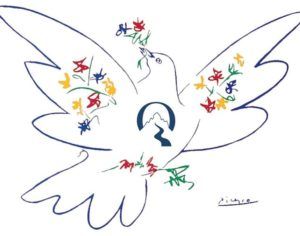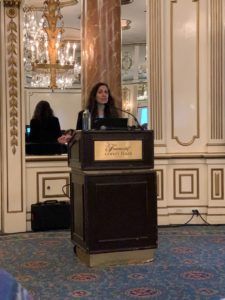 In preparing for Novembers Healthcare Leadership course being offered online this November (2020), I came across–and updated–this post, more relevant than ever for our times!
In preparing for Novembers Healthcare Leadership course being offered online this November (2020), I came across–and updated–this post, more relevant than ever for our times!
Last night, Quest Montessori School offered a peace and nonviolence training put on by the middle school students.
The group of parents and younger students broke up into three groups and my son asked to switch to the “What is Violence?” workshop as his closest friend headed there. It wasn’t the workshop I would have chosen or the one suggested as our first “stop” in our handout.
I followed his lead.
Two seventh grade girls led the workshop, their third partner home sick and unable to join. Let’s call them Jane and Maria.
Jane and Maria handed out orange stickies and thick colored magic markers and Maria asked us to think of one word when we think of violence.
I wrote “Genocide.”
We placed our stickies up at the front of the room.
Next Maria asked us to think about a solution and write it on another sticky.
A solution to Genocide? I felt a bit powerless but wrote, “teaching tolerance.” It seemed to me it would take an awful long time to solve the problem of Genocide by teaching tolerance. Some people read their stickies; others just posted them up front.
Next, Jane asked us to think about nonviolence, that it isn’t the same as non-violence. Nonviolence is a presence. Non-violence, an absence. She shared Martin Luther King’s writing on Agape.
King on Agape
 Martin Luther King, Jr. said, “Agape is…a love in which the individual seeks not his own good, but the good of his neighbor. Agape does not begin by discriminating between worthy and unworthy people, or any qualities people possess. It begins by loving others for their sakes. It is an entirely ‘neighbor-regarding concern for others,’ which discovers the neighbor in every man it meets. Therefore, agape makes no distinction between friends and enemy; it is directed toward both. If one loves an individual merely on account of his friendliness, he loves him for the sake of the benefits to be gained from the friendship, rather than for the friend’s own sake. Consequently, the best way to assure oneself that love is disinterested is to have love for the enemy-neighbor from whom you can expect no good in return, but only hostility and persecution.”
Martin Luther King, Jr. said, “Agape is…a love in which the individual seeks not his own good, but the good of his neighbor. Agape does not begin by discriminating between worthy and unworthy people, or any qualities people possess. It begins by loving others for their sakes. It is an entirely ‘neighbor-regarding concern for others,’ which discovers the neighbor in every man it meets. Therefore, agape makes no distinction between friends and enemy; it is directed toward both. If one loves an individual merely on account of his friendliness, he loves him for the sake of the benefits to be gained from the friendship, rather than for the friend’s own sake. Consequently, the best way to assure oneself that love is disinterested is to have love for the enemy-neighbor from whom you can expect no good in return, but only hostility and persecution.”
Once we understood something about the meaning of nonviolence as love, peace and agape, the girls invited us to write one or more words we think of when we think of nonviolence. I wrote, “connection with others.” We were also asked to write words about how that made us feel. Mine were, “hope” and “gratitude.” As people came up to read their lists, we generated feelings associated with these words—love, compassion, connection, caring…the list went on and we were filled with possibility. The girls reminded us that this is where the power for change comes from—generating words, thoughts, beliefs from the space of nonviolence, not the other way around!
I was struck by the complete change in our moods and thoughts, what we believed possible after the final exercise. It became so clear that the context and emotions we bring to a problem are what transform the problem and change the world. What possibilities this opened up for me in personal and professional communication!
[bctt tweet=”What I Learned About Leadership from Two Seventh Graders #SheLeadsHealthcare #SheLeads2018 #BeEthical ” username=”LisaTener”]At the end of the brief workshop, I congratulated the girls and asked if this was a lesson they’d been taught by the people from the Center for Nonviolence and Peace Studies at the University of Rhode Island or from Nonviolent Schools RI.
“No, we came up with the exercises ourselves.”
I was blown away that such powerful exercises came from these young people’s own creative process (inspired, of course, by the powerful exercises and extensive training they’d received from these two wonderful organizations).
My Change of Heart from Fear to Leadership

Today, I am teaching a workshop on how to rewrite your healthcare leadership bio at Harvard Medical School’s conference, “Career Advancement and Leadership Skills for Women in Healthcare.”
Last night, I woke up in the middle of the night imagining the worst: “Will I forget everything I want to say and just read my slides?” “Will they like me?” “Will I make an utter fool of myself?” “Will they ask me questions I can’t answer.”
Fortunately, a better part of me—let’s call her leadership—nudged away the ego and reminded me of the lesson from the nonviolence training. This was never about me, at least not in the context of me alone. This is about WE.
Leadership is about service—to the individuals in the room, to a broader community and to our world. In that context, I will be here to focus on the community in the room with me. This wasn’t the first time I had to rediscover my leadership qualities and tap into a more expansive, loving and empowered version of myself. But something about the nonviolence training has given me additional tools—and as I generate the words and emotions that inspire me for today’s talk, I am feeling so excited, I can’t wait to get into that room! Now, that’s a shift.
#BeEthical
At this year’s conference, the theme is around #BeEthical, framing the ending of gender workforce disparities as an ethical issue—which it is. How powerfully the #BeEthical campaign sets a tone that generates connection, positivity and empowerment for that change! As each of us keeps in mind our biases (and we all have biases), and becomes more conscious of how we want to be treated and how we want to treat others, we have an opportunity rooted in the powerful traditions of the work of Dr. King and others to create communities in connection with each other. To see each other not as “other” but as team members, colleagues and fellow human beings.
You can read more about the #BeEthical Campaign here.
Heartened
In closing, I’m humbled and heartened to receive my leadership training from a pair of thirteen-old-girls. What hope it gives me for our future!
I realized a few days after posting this that I wanted to replace my usual Thanksgiving gratitude email by sharing this post, because I hope it will be the gift to you the brief workshop was to me—already transforming several interactions in my life, as I turn away from the perceived problem and towards the thoughts, feelings and experiences I wish to generate for myself and others.
I mentioned the power of the workshop to Quest Montessori Headmaster, Kathy Bowen, this morning and she told me that one of the young women told her that the leadership training she had undergone in the middle school program had changed her life.
“How so?” Kathy asked her.
“I’m not the same person I was when we started. I’m a different person now.”
How often can we say that we are truly a different person because of an experience or training?
Check out the work of the Center for Nonviolence and Peace Studies at the University of Rhode Island. They offer training for people from all over the world.
Thanksgiving and Transformation
I love the holiday of Thanksgiving because of the focus on gratitude. Giving thanks sets a beautiful tone and brings people together.
One year, though, at least two decades ago, I dreaded going home for Thanksgiving. It was a challenging time in my relationship with my parents and I could only see the problem. At the time, a friend had given me a deck of inspirational cards from which to draw in difficult situations.
The day before Thanksgiving, I drew a card, for guidance on how to be with my family on the day before Thanksgiving. The random card I picked out of the deck illustrated ancient people giving thanks in community!
That card inspired my husband and me to think about how we could celebrate and be grateful in community with my family. As we drove from Boston to New York, we imagined what we wanted to create in my family during that visit. We pictured ourselves arriving happy and energized and sharing that great feeling with everyone around.
The result? A completely different experience. Our interactions were not like the predictable visits from the past.
Our focus moved from the problem (daunting) to a completely different focal point of how we wanted to feel and be in community with others. I think of Einstein’s quote about not being able to solve a problem from the consciousness that created it.
This Thanksgiving, in addition to our gratitude for all that is good in our lives, I invite us all to think about what we want to generate this holiday and beyond—our love, our connections, our books (of course!), a healthy and clean earth, connected communities, deep friendship, time for all that is precious to us, connection with nature. Let us create from what we desire, not what we don’t!
What are you grateful for? And what do you desire to create? Name it here and share as a comment! Happy Thanksgiving.

